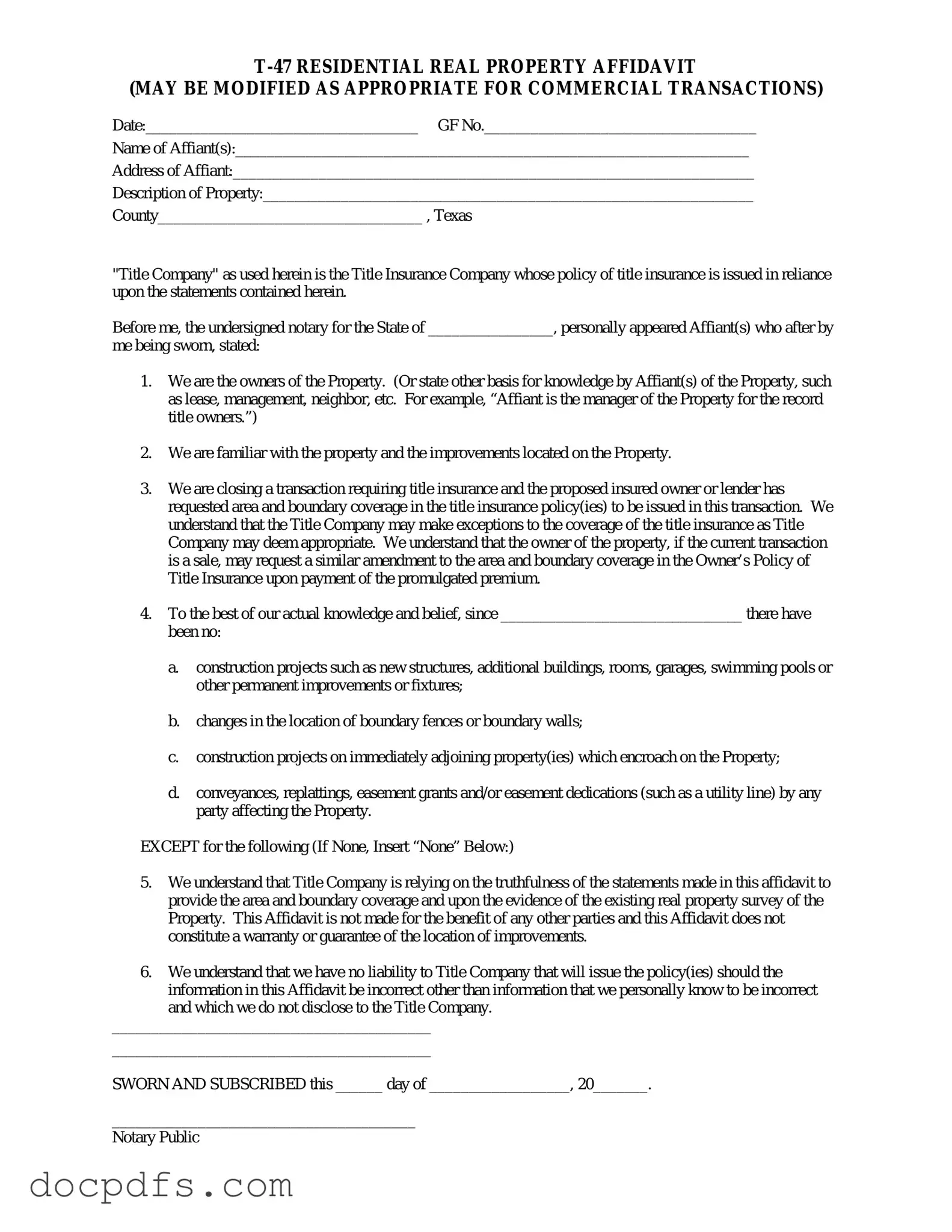Texas residential property affidavit T-47 Template in PDF
The Texas residential property affidavit T-47 form is a legal document used in real estate transactions to affirm the ownership and condition of a property. This form provides essential information to lenders and buyers, ensuring transparency in property dealings. Understanding its purpose and requirements is crucial for anyone involved in Texas real estate transactions.
Open Texas residential property affidavit T-47 Editor Now
